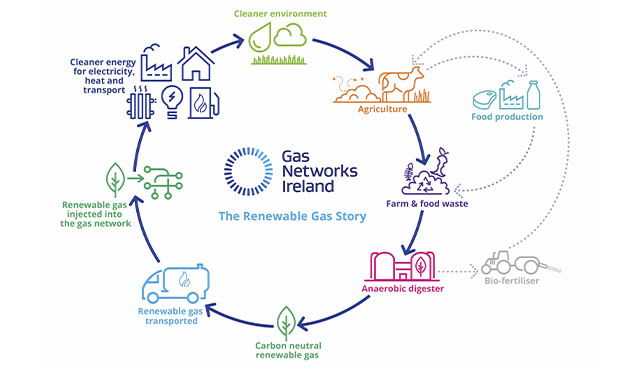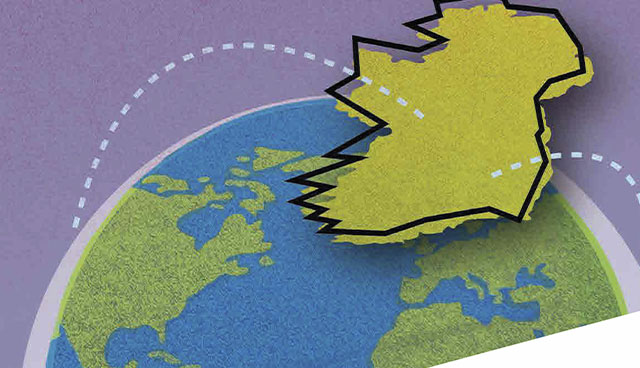
Ireland’s gas network: A decarbonisation solution of size and scale
9th May 2022
European trends in climate litigation
12th May 2022In April 2022, the Dáil approved Ireland’s first ever carbon budget, a significant part of the Climate Action Plan 2021 (CAP21), which makes Ireland one of the most ambitious countries in the world on climate.
The carbon budget sets out the total amount of emissions that may be emitted in the State, measured in tonnes of carbon dioxide equivalent. The first proposed carbon budget cycle lasts until 2025 and allows for a total of 295 Mt of emissions to be produced, with a limit for 200 Mt between 2026 to 2030 and 151 Mt between 2031 to 2035.
The carbon budget follows the publication of CAP21 in November 2021, which set out draft target ranges for how far each sector will be required to reduce its emissions on 2018 levels, in order for the country’s overall emissions to halve by 2030.
Annual climate action plans, essentially sectoral roadmaps for meeting national 2050 climate objectives, are required under the Climate Action and Low Carbon Development Acts 2015 to 2021. CAP21 identifies 475 actions, building on CAP19 and many of these actions have been referenced in budget allocations within the €156 billion National Development Plan.
Delivery of CAP21 will require approximately €45 billion in additional capital expenditure, €25 billion of which will be required for the buildings sector, €15 billion for the power sector, and €5 billion in transport. More broadly an estimated €125 billion will need to be mobilised towards low-carbon technologies and infrastructure out to 2030.
The share of additional total investment will vary substantially by sector, as will the expected emission cut needed. CAP21 sets out target ranges for each sector if Ireland is to reduce emissions by 51 per cent by 2030, against 2018 figures.
- Electricity: 62-81 per cent
- Buildings: 44-56 per cent
- Transport: 42-50 per cent
- Land and forestry emissions: 37-58 per cent
- Industry: 29-41 per cent
- Agriculture: 22-30 per cent
Electricity
CAP21 raises the ambition of the proportion of renewable electricity to 80 per cent by 2030. Of the 15GW of new renewable capacity, quadrupling of current renewable capacity, 5GW is to come from offshore energy, 1.5-2.5GW from solar PV and 2GW from new gas-fired power. Alongside the proposed microgeneration support scheme, the Government has pledged to introduce a small-scale generator scheme, allowing communities to feed into the grid. As well as plans to develop improved storage and deploy renewable gas, CAP21 also sets out a review of the strategy on data centres to align with sectoral emission targets.
Buildings
Building on the existing commitment to retrofit 500,000 residential homes by 2030, the Government has said it recognises the need to assist broader society with retrofitting costs. A total of 50,000 commercial buildings are to be serviced by zero-carbon heating. CAP21 sets out plans for a further three specialist training centres to be established to support the new National Retrofit Plan. A regulatory framework for district heating, as well as identifying appropriate financing mechanisms and the allocation of support to projects from the Climate Action Fund, is expected to deliver 2.7 TWh of district heating.
CAP21 raises the ambition of the proportion of renewable electricity to 80 per cent by 2030.
Transport
The plan calls for a 14 per cent increase in public transport and active travel journeys by 2030, meaning 500,000 extra walking, cycling and public transport journeys per day. As well as increasing use of electric cars by 40-45 per cent of the proportion of kilometres driven, the plan also seeks a 10 per cent reduction in kilometres driven by internal combustion engine cars. By 2030, all replacement bus and commuter rail vehicles are to be low or zero carbon and CAP21 plans for an increased rollout of rural public transport through Connecting Ireland.
Land use
It is recognised that in order to reduce emissions, Ireland’s land use will need to be transformed from a carbon source to a carbon sink. Doing so will require a range of measures including bog rehabilitation, grassland management, organic soil rewetting and increased afforestation. In aid of this, the Government has announced preparation for a new forestry programme launch in 2023. It is also intended that 30 per cent of Ireland’s marine area is designated as Marine Protected Area.
Industry
The Government plans to produce a Climate Toolkit for business, adding to work from the IDA, Enterprise Ireland and the SEAI to decarbonise industry and align grants with other supports. Included in the measures to cut emissions are increasing the uptake of carbon-neutral heating and decreasing the embodied carbon in building materials through more wood in construction.
Agriculture
The Government says it will incentivise increased organic farming and diversification into forestry, biomethane and energy production. Potentially the biggest target relates to collaboration between the agriculture and waste sectors, targeting 1.6 TWh per annum of biomethane for injection to the grid. Alongside plans to incentivise increased organic farming, CAP21 sets out plans to explore further pathways to emissions reduction through the likes of land diversification, herd-related methane, and farm carbon trading.
Outside of the identified sectors, CAP21 identified further measures including the €100/tonne by 2030 carbon tax raising of €9.5 billon, €5 billion of which has been allocated to retrofits, €3 billion for just transition and €1.5 billion for the promotion of sustainable agriculture practices. Additionally, a Bioeconomy Action Plan is anticipated by 2022 following the publication of the Circular Economy Strategy and targets for the public sector of 51 per cent emissions reduction and 50 per cent energy efficiency improvement from 2016-2018 levels.
Climate Action Plan 2022 is expected to fully reflect the legally adopted carbon budgets and sectoral ceilings. In recent Dáil questions, Minister for the Environment, Climate and Communications Eamon Ryan TD confirmed that the 2022 plan will be published in Q4 2022.





 Ossian Smyth TD
Ossian Smyth TD Florika Fink-Hooijer
Florika Fink-Hooijer Antoine Oger
Antoine Oger Laura Curtis-Moss
Laura Curtis-Moss Anthony Costello
Anthony Costello Anja Murray
Anja Murray Niall Ó Donnchú
Niall Ó Donnchú Mike Savage
Mike Savage Brian Carroll
Brian Carroll Claire Downey
Claire Downey Oisín Coghlan
Oisín Coghlan Stephen Onakuse
Stephen Onakuse Kevin O’Sullivan
Kevin O’Sullivan Susan Hegarty
Susan Hegarty Hendrik W van der Kamp
Hendrik W van der Kamp Philip Nugent
Philip Nugent Adrian Smyth
Adrian Smyth  Ainhoa Gonzalez Del Campo
Ainhoa Gonzalez Del Campo  Geoff Dooley
Geoff Dooley  Clare Pillman
Clare Pillman  David Greenfield
David Greenfield Danielle Conaghan
Danielle Conaghan Peter McEvoy
Peter McEvoy Triona McGrath
Triona McGrath J Owen Lewis
J Owen Lewis Gavin Smith
Gavin Smith Imelda Hurley
Imelda Hurley Lucy Gaffney
Lucy Gaffney Dr Venkatesh Kannan
Dr Venkatesh Kannan Kevin Hegarty
Kevin Hegarty Eimear Cotter
Eimear Cotter Aditya Arora
Aditya Arora Patric Child
Patric Child Eleanor Roche
Eleanor Roche Andy Bleasdale
Andy Bleasdale Andrew Muir MLA
Andrew Muir MLA Chris Hewitt
Chris Hewitt Francesca Racioppi
Francesca Racioppi Christopher Hammond
Christopher Hammond Laura Díaz Anadón
Laura Díaz Anadón Lorna McAdoo
Lorna McAdoo Conor Murphy
Conor Murphy  Mark Horton
Mark Horton  Niall McLoughlin
Niall McLoughlin  Zoe Kavanagh
Zoe Kavanagh Niall Ó Donnchú
Niall Ó Donnchú Venkatesh Kannan
Venkatesh Kannan David McGee
David McGee Anna Rose
Anna Rose Paul Hogan
Paul Hogan








